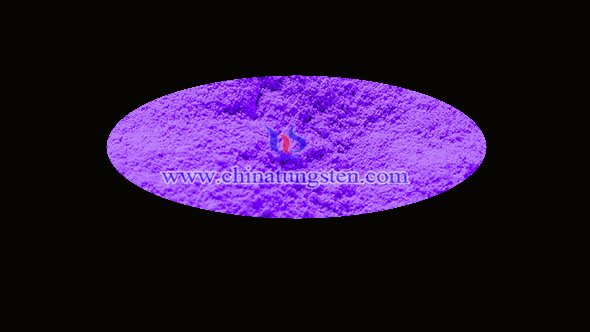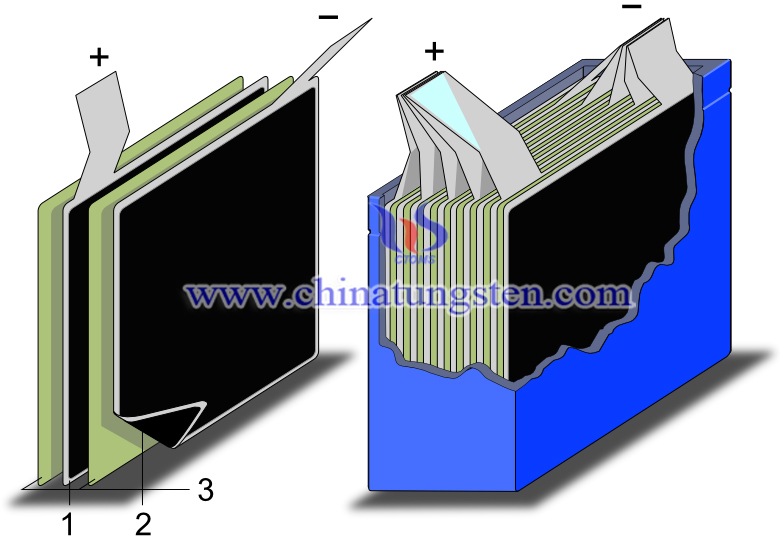Tungsten Oxide in Negative Electrode Material
- Details
- Category: Tungsten's News
- Published on Friday, 01 March 2019 17:28
The use of tungsten oxide (WO3) as a negative electrode material gives lithium-ion (Li-ion) batteries a very high speed of charging and discharging. It can help lithium-ion batteries achieve ultra-fast charging, and also build high-power density battery devices to achieve smaller, lighter device.
Purple tungsten oxide (WO2.72 or W18O49) is a finely divided crystalline powder, and it was made by removing oxygen from WO3 to enhance electron conductivity. Because it has a small internal resistance and excellent Li-ion diffusibility, it enables to charge/discharge with a large current when used as a negative electrode material.

Picture of purple tungsten oxide
With purple tungsten oxide, the battery features an output density and energy density that are 100-200% higher than those of electric double layer capacitors (EDLCs). Its energy density is even higher than that of Li-ion capacitors, which are aimed at improving the energy density of EDLC. Therefore, the new battery can be used for high-output applications, which are difficult with EDLCs due to the shortage of energy density and with Li-ion rechargeable batteries due to the shortage of output.

Picture of electric double layer capacitor
The powder material has excellent discharge properties even at low temperatures and has rate properties equivalent to or higher than those of EDLC even at a temperature of -40°C. Previously, the rate characteristics of Li-ion secondary batteries and Li-ion capacitors at low temperatures have been an unsolved problem.
Purple tungsten oxide has a very high chemical activity and enhances electron conductivity. The material can be used by battery makers to make electrode. Because the battery can input/output a large current, it is suited for large-current power supply devices including those for energy regeneration in the fields of automobiles and construction machines.
- Tungsten Manufacturer & Supplier, Chinatungsten Online: www.chinatungsten.com
- Tungsten News & Prices of China Tungsten Industry Association: www.ctia.com.cn
- Molybdenum News & Price: news.molybdenum.com.cn
- Tel.: 86 592 5129696; Fax: 86 592 5129797; Email: sales@chinatungsten.com



 sales@chinatungsten.com
sales@chinatungsten.com